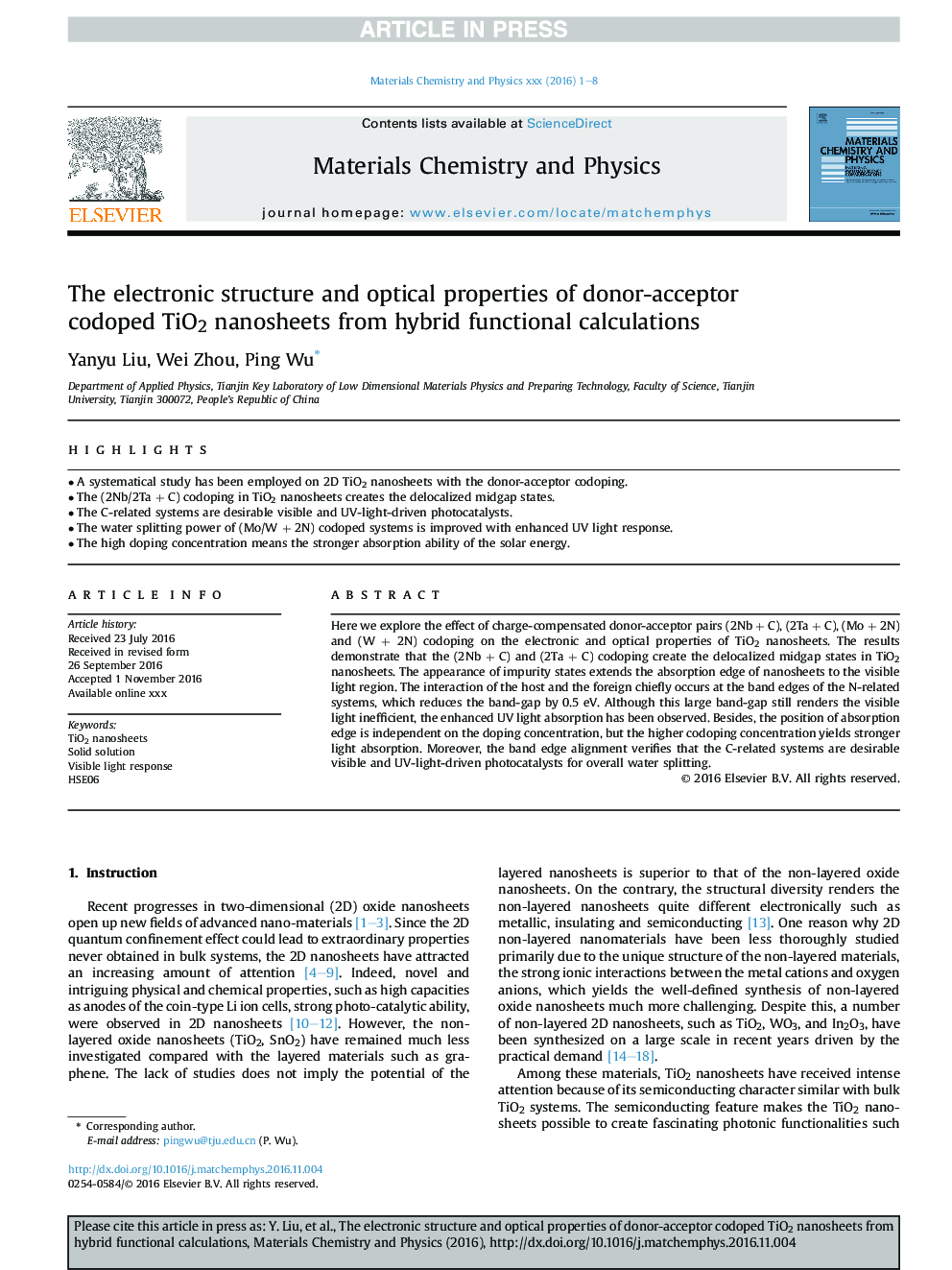| Article ID | Journal | Published Year | Pages | File Type |
|---|---|---|---|---|
| 5448499 | Materials Chemistry and Physics | 2017 | 8 Pages |
Abstract
Here we explore the effect of charge-compensated donor-acceptor pairs (2Nb + C), (2Ta + C), (Mo + 2N) and (W + 2N) codoping on the electronic and optical properties of TiO2 nanosheets. The results demonstrate that the (2Nb + C) and (2Ta + C) codoping create the delocalized midgap states in TiO2 nanosheets. The appearance of impurity states extends the absorption edge of nanosheets to the visible light region. The interaction of the host and the foreign chiefly occurs at the band edges of the N-related systems, which reduces the band-gap by 0.5 eV. Although this large band-gap still renders the visible light inefficient, the enhanced UV light absorption has been observed. Besides, the position of absorption edge is independent on the doping concentration, but the higher codoping concentration yields stronger light absorption. Moreover, the band edge alignment verifies that the C-related systems are desirable visible and UV-light-driven photocatalysts for overall water splitting.
Related Topics
Physical Sciences and Engineering
Materials Science
Electronic, Optical and Magnetic Materials
Authors
Yanyu Liu, Wei Zhou, Ping Wu,
